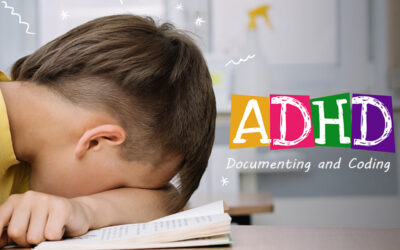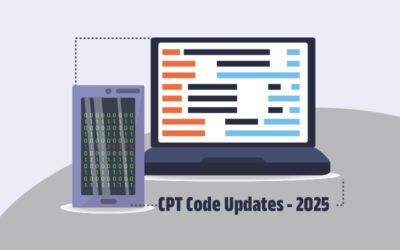People seem to go overboard during the holidays with all kinds of over-indulgences. Physicians have to deal with complaints associated with everything from overeating, binge drinking and dancing the night away to emotional stress and holiday anxiety. Don’t worry – there is a bunch of ICD-10 codes for these holiday hazards and our medical coding company can help you report them. Let’s take a look at those New Year “activities” that could lead people to your office:
Overeating/excessive appetite: All those tempting treats, savory dishes and sweets are bound to take their toll. To report overeating behavior, use
- R63.2 – polyphagia Other symptoms and signs concerning food and fluid intake. This code can be used for symptoms from a single episode of overeating or repeated overeating.
Combine rich, fatty foods, creamy sauces, cookies, candies, sinful desserts, mulled wine, champagne, and cocktails in large measures and you have the perfect recipe for heartburn and acid indigestion. So if your patient’s complaining of a painful, burning feeling in the chest or throat, it’s highly likely those New Year parties are the culprit. Chest pain due to gastroesophageal reflux disease (GERD) has a distinct ‘burning’ sensation, occurs after eating or at night, and worsens when a person lies down or bends over. Based on symptoms and signs involving the digestive system and abdomen, the following ICD-10 codes could come in useful:
- R10 Abdominal and pelvic pain
- R11 Nausea and vomiting
- R12 Heartburn
- R13 Aphagia and dysphagia
- R14.0 Abdominal distension (bloating)
- R14.1 Gas pain
- R14.3 Flatulence
- R19.7 Diarrhea
- K30 Functional dyspepsia (indigestion)
- K58.0 IBS w/diarrhea (irritable bowel syndrome with diarrhea)
Dancing: She was the life of the parties, the Dancing Queen, and thought she was immune to injury as she tap-danced and gyrated the nights away. Blame it on that champagne! Now she limps into your office – her feet and ankles have taken the brunt of the stress, while the accidental twists and constant pounding have affected her knees. She’s going to be okay – eventually. Code it right –
- Y93.41 Activity, dancing
Toasting: You could be seeing a lot of people who had a drink too many to ring in the New Year. The following codes will come in handy for those who got totally blitzed:
- R47.81 Slurred speech
- F10.10 Alcohol abuse, uncomplicated
- F10.129 Alcohol abuse with intoxication
- F10.920 Alcohol use with intoxication, uncomplicated
Crowded celebrations: Crowded places are not my cup of tea, you say. But that’s where the party is, argue your friends. You realize you should have stayed back when you get there – Jackson Square and the Fleur-de-lis drop are great for those who’re not claustrophobic. Your doctor will report your anxiety disorder using:
- F40.240, Claustrophobia
Celebratory gunfire: Shooting into the air to celebrate the New Year, especially by someone who’s drunk, can compromise the safety of anyone who steps outside. The police do crack down on celebratory gunfire, but if someone gets hurt, there a code for it:
- W34.110 Accidental malfunction of airgun, initial encounter
Popping the bubbly: Some people who pop the bubbly tend to forget that classic New Year’s Eve celebration can cause accidents. Improperly aimed popping of champagne corks is one of the most common causes for holiday-related eye injuries. It can cause bleeding, abrasions and even glaucoma. Codes used to report such eye injuries include:
- S05.00XA Injury of conjunctiva and corneal abrasion without foreign body, unspecified eye, initial encounter
- H40-H42 Glaucoma
The morning after: “It’s not a hangover. It’s wine flu.” Well, “wine flu” could be the most common complaint physicians see around in the festive season. You hear “nausea, headache…” over and over again. The codes:
- F10.129, Hangover (alcohol)
- E86.0 Dehydration
- R51 Headache
- R11.2 0 Nausea and vomiting
High heel hell: Hours of partying in stilettos can cause feet hangover the next day. High heels can cause all kinds of foot problems including sprains, skin sores, pain in the ball of the foot, bunion irritation, hammer toe pain, and/or heel abrasion. Relevant codes:
- S90-S99 Injuries to the ankle and foot
- S93.401A Sprain of unspecified ligament of ankle
- M77.41 Metatarsalgia, right foot
- M77.42 Metatarsalgia, left foot
- M21.611 Bunion of right foot
- M21.612 Bunion of left foot
Emotional stress: As the holidays end, you are likely to see patients reporting severe stress. There are so many things that trigger stress during the holidays – gift buying, time pressures, family problems, lost sleep, and more. Codes to use:
- F43.8 Emotional stress
- Also related: Z63.1 Problems in relationship with in-laws
These are some examples of the typical ICD 10 codes that physicians end up using during the holidays. To report the right codes for other conditions, they can always rely on their medical coding company.
Happy New Year!




